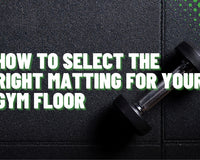If you’re on a mission to build a stronger, rounder glutes, you’ve probably heard of two popular exercises, these being the hip thrust and the glute bridge.
At first, they might look like twins, as they both involve lifting your hips upwards, engaging your glutes. However, they are different exercises with slightly different results and benefits.
So, which is better? It depends on your taste, goals, and whether you have access to a gym or are working out on your living room carpet, as hip thrusts are great to do if you have a Smith machine or barbell, whereas glute bridges are ideal to do without equipment.
Let’s break it all down so you know when to bridge, when to thrust, and how to squeeze the most out of your glute workouts.
What Is a Glute Bridge?

The glute bridge is a simple yet effective exercise to build your glutes, and you don't need a bench, equipment, or anything else of the sort. You only need the floor below you and the motivation to do this exercise.
To do a glute bridge, simply lie on your back with your knees bent, your feet flat on the ground, and your arms at your sides.
You're going to push your heels into the ground, squeeze your glutes together, and lift your hips up at the same time, until your body forms a straight diagonal line from your shoulders to your knees. Pause once you get to the top, squeeze extra hard, and then lower down with control.
While this move is often seen in warm-ups or yoga classes, don’t underestimate its ability to build solid glutes. It activates your glutes, hamstrings, and core, and helps improve hip stability and posture. Plus, it’s a good way to wake up sleepy glutes after a long day of sitting.
Related Post: KAS Glute Bridge vs Hip Thrust
Pros of the Glute Bridge
Unsurprisingly, the glute bridge has a great number of benefits, as we can see below.
-
It’s beginner-friendly and perfect for newbies.
-
You don’t need any equipment.
-
Your living room becomes your gym.
-
It’s gentle on your joints and lower back.
-
It won't cost you any money.
Cons of the Glute Bridge
Although the glute bridge is a great exercise, it does have some drawbacks, as you'll see below.
-
The range of motion is limited since your back stays on the ground.
-
Progressing can be tricky because balancing a dumbbell on your hips is an art form.
-
Eventually, your glutes will demand more of a challenge.
What Is a Hip Thrust?

We then have the hip thrust, which is like a much more advanced version of the glute bridge.
To do a hip thrust, you're going to need either a Smith machine or a bench with a barbell. You're going to sit on the ground with your back against the bench, your feet flat on the floor, and the barbell resting firmly across your hips.
Use as much weight as you can comfortably handle without causing you discomfort.
Just like with the glute thrust, you're going to push through your heels and thrust your hip upwards until your thighs are parallel with the ground. Take a moment to squeeze at the top, and then lower back down in a controlled manner.
What really stands out about the hip thrust is its range of motion, because your back is elevated, it means your hips can travel further.
Because there's a greater range of motion, it means you're activating more muscles, and therefore challenging your glutes even more.
Related Post: What Muscles Do Side Lunges Work?
Pros of the Hip Thrust
Let's take a look at the benefits that the hip thrust brings to the table.
-
It allows for heavy loading and progressive overload.
-
The greater range of motion means better glute activation.
-
It’s the go-to exercise for serious booty builders and athletes.
Cons of the Hip Thrust
Just like the glute bridge has drawbacks, so does the hip thrust.
-
Requires equipment and space, which can be a hassle.
-
Getting the barbell into place can be awkward and slightly ungraceful.
-
Not ideal for beginners due to setup and technique demands.
Hip Thrust vs Glute Bridge: The Main Differences

Although both exercises use the same hip hinge pattern and are designed to blast your glutes, the level of intensity, range of motion, and setup are all slightly different.
If we are talking about the glute bridge, it's much more accessible, and it's a good starting point for beginners. However, the hip thrust is much more difficult, so if you're looking to engage in some progressive overload for glute growth, this is it.
Worth noting is that hip thrusts use a full range of motion, and they move your hips from full extension to full flexion, something that a glute bridge doesn't really do.
Therefore, hip thrusts activate much more muscle mass, therefore providing you with greater benefits.
There’s also the simple fact that you can add more weight to hip thrusts, particularly when compared to glute bridges, therefore activating your muscles just that much more.
Related Post: Smith Machine Hip Thrust Guide
When Should You Do Glute Bridges?
Glute bridges are ideal for beginners who need to learn proper hip extension mechanics, for those recovering from injury, for those working on mobility, for glute warmups, and for home workouts, particularly if you don't want to purchase any equipment.
They’re simple, safe, and surprisingly effective. You can spice them up with resistance bands, single-leg variations, or even holding a dumbbell on your hips. But sooner or later, your glutes will crave more.
When Should You Do Hip Thrusts?
Hip thrusts are excellent to do when you want to grow some serious glutes and add a whole lot of weight to the equation. If you're looking for something that helps support your deadlift and squat performance, then the hip thrust is it.
Hip thrusts are a staple in strength and conditioning programs because of how effectively they build posterior chain power.

So, Which One Should You Do?
Start with glute bridges to build a strong foundation. Once you’ve mastered the movement and feel confident with your form, step up to hip thrusts.
You can also combine them in your training. Use glute bridges for activation or high-rep finishers, and hip thrusts for your heavy working sets. This way, you get the best of both worlds: volume and intensity.
Final Thoughts
The hip thrust and glute bridge are both fantastic exercises, but they serve different purposes. Glute bridges are simple, accessible, and a great place to begin your journey. Hip thrusts bring the serious weight, the range of motion, and the gains.





